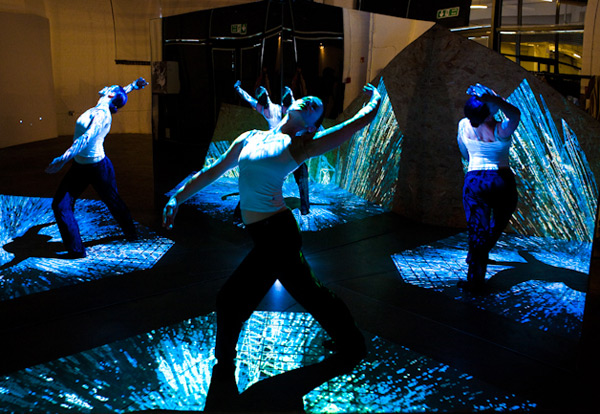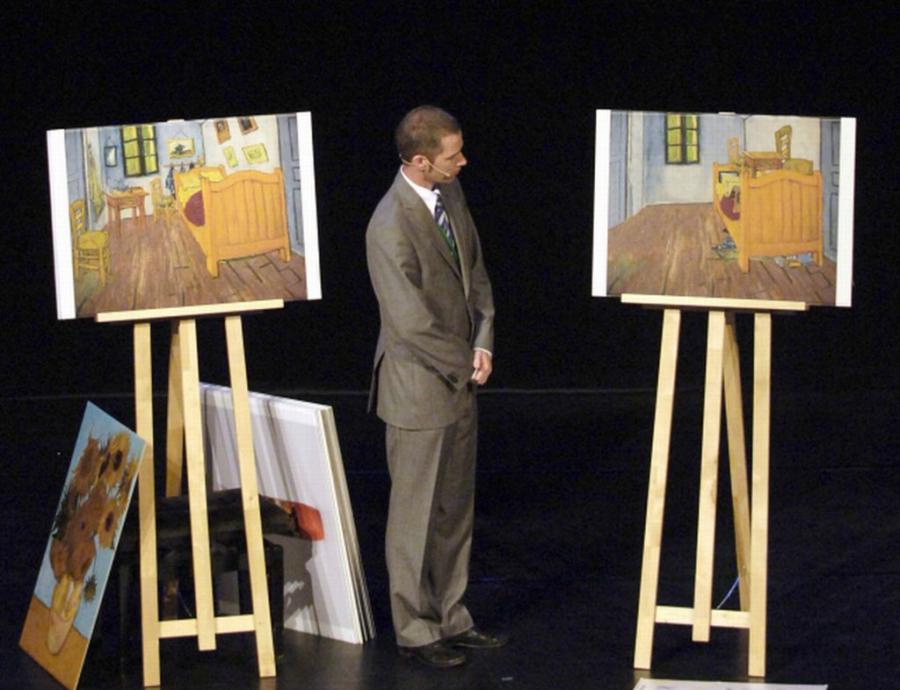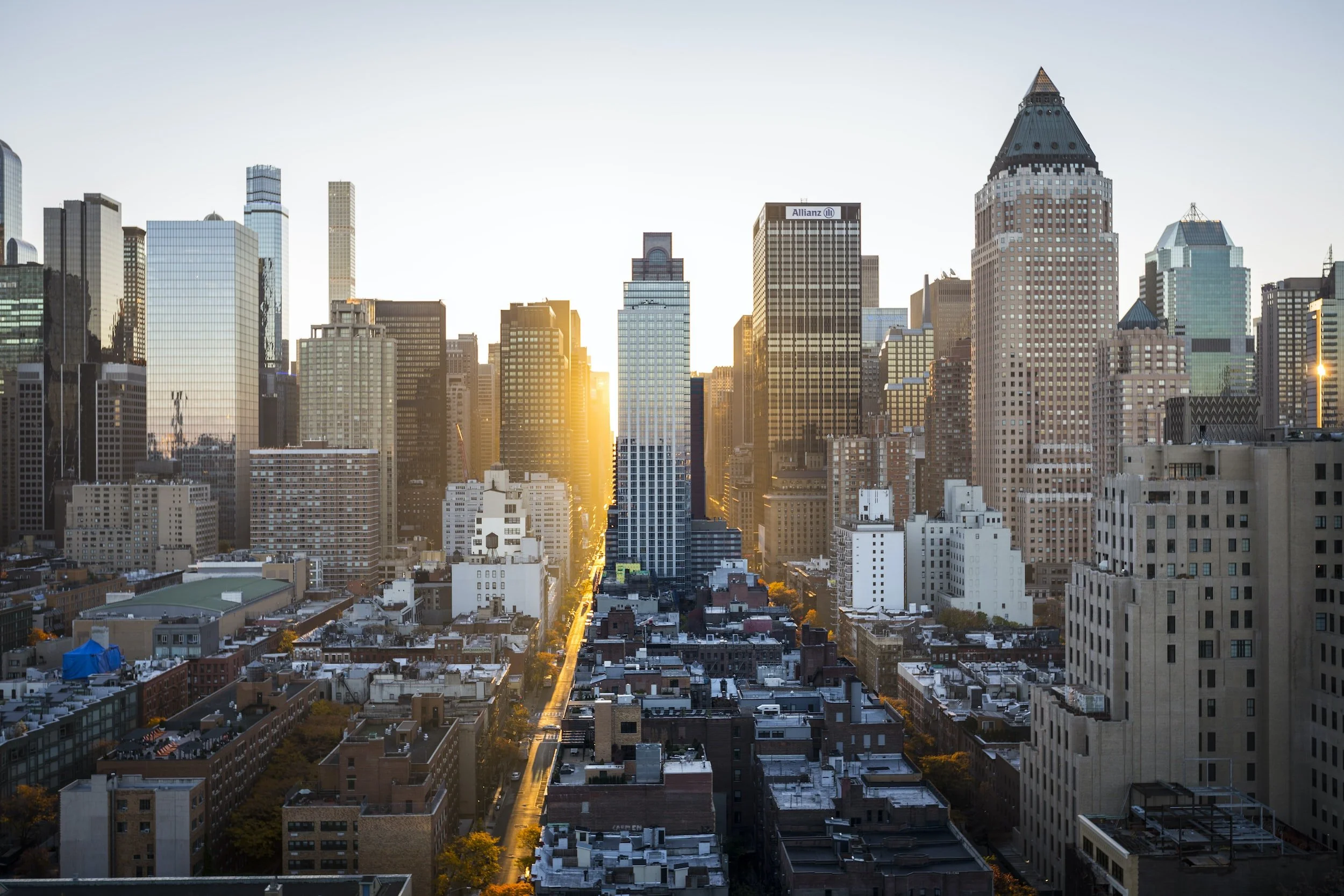While contemporary art museums often focus on re-creating the physical experience of the museum online, there is a wealth of unexplored opportunities for creative digital engagement with art that is largely unexamined.
The Need for Art in the Smart City
How Museums Are Dealing With New Media Art: Part 1
When talking about new media art, there is no single definition. According to a 2001 research study by the Rockefeller Foundation, media artworks can be defined according to nine common elements: fluidity, intangibility, liveness, variability, replicability, connectivity, interactivity, computability, and chance. New media art is a very general and broad category and includes many subcategories. Among these, net art, digital art and plurimedia art are the most common within the visual art field. Nevertheless, the meaning of new media is constantly evolving.
Deconstructing, Reconstructing and Tidying Up Art
In this Wednesday's post, exhibit viewers re-choreograph Henri Matisse’s Dance II and a Swiss comedian cleans the floor of Vincent van Goh’s  Vincent’s Room, Arles. Yes, you read that correctly, what I have to share today is as glorious and odd as it sounds. It has taken me quite some time to settle down long enough to write this post- I have been rather distracted by these projects and videos. I know you will be too…sorry in advance…
Let’s first take a look at Intel’s newest project in its Visual Life campaign- “Remastered: A Visually Smart Production from Intel.” Showcasing the work of leading curators and innovative designers, the exhibit on display at London’s One Marylebone explores and pushes the boundaries between art and technology; more specifically, between “old art” and Intel’s newest processing technology. The result, you ask? A sound installation remake of Wassily Kandinsky’s On White II, an online application of Pablo Picasso’s Guernica, a moving image rendering of Salvador Dali’s The Persistence of Memory, a food design and photography adaptation of Leonardo Da Vinci’s The Last Supper, a visual animation of J.M.W. Turner’s Rain, Steam and Speed-The Great Northern Railway, and a stereoscopic, and 3D animation of Casper David Friedrich’s Wanderer Above the Sea of Fog (a special favorite of mine), just to name a few. Collaborating with jotta, Intel’s curatorial and creative partner, the artists “remastered” select classic works of the world’s greatest masters using digital processes to give new meaning to “old art” for a modern audience.
Vincent’s Room, Arles. Yes, you read that correctly, what I have to share today is as glorious and odd as it sounds. It has taken me quite some time to settle down long enough to write this post- I have been rather distracted by these projects and videos. I know you will be too…sorry in advance…
Let’s first take a look at Intel’s newest project in its Visual Life campaign- “Remastered: A Visually Smart Production from Intel.” Showcasing the work of leading curators and innovative designers, the exhibit on display at London’s One Marylebone explores and pushes the boundaries between art and technology; more specifically, between “old art” and Intel’s newest processing technology. The result, you ask? A sound installation remake of Wassily Kandinsky’s On White II, an online application of Pablo Picasso’s Guernica, a moving image rendering of Salvador Dali’s The Persistence of Memory, a food design and photography adaptation of Leonardo Da Vinci’s The Last Supper, a visual animation of J.M.W. Turner’s Rain, Steam and Speed-The Great Northern Railway, and a stereoscopic, and 3D animation of Casper David Friedrich’s Wanderer Above the Sea of Fog (a special favorite of mine), just to name a few. Collaborating with jotta, Intel’s curatorial and creative partner, the artists “remastered” select classic works of the world’s greatest masters using digital processes to give new meaning to “old art” for a modern audience.
…The exhibition unlocks the creative potential of technology and underlines how visual masterpieces can be created with simply a mouse as a brushstroke or a screen as a canvas.
Exhibitions like these generate much discussion in both the academic and professional art world, as the issue of the digitization of art remains a hot topic of debate. What is most inspiring about these remastered pieces is the beauty in the medium. As an art history student and Italian Renaissance aficionado, I am neither offended nor resistant to the digital world’s claim it can reproduce or master painterly qualities and techniques in its own medium. It is important to view these “remastered” pieces not as competitors of the original work, but as showcases of the power, potential and influence technology has in the modern artistic process.
If you are familiar with Turner’s oeuvre, be sure to view Eric Schockmel’s 3D animation of the painting, Rain, Stream and Speed- The Great Northern Railway. Known for his unsurpassed ability to render light, Turner’s work is an experience of the Sublime, an aesthetic theory originating in the 18th-century. Schockmel’s stunning remastering addresses themes consistent in Turner’s work. But can the advanced technology of 3D modeling, animation software, Adobe After Effects and sound design create an experience of the Sublime, a theory developed in response to a level of advanced and dramatic painterly techniques? Or is it unfair to project such standards and theories on the entirely unique and individual medium of digital art? Do we need to develop a new vocabulary with which to discuss it? The artists featured have contextualized the meanings of the “old art” in today’s modern and digital age. As jotta's head of creative, Ben James stated
The broad range of work and outcomes exhibited within Remastered help demonstrate how technology is being adopted practically and conceptually by artists and designers across all disciplines. The intersection of technology and art has gone far beyond its creation on a computer to a symbiotic relationship -- one where new technology offers new opportunities to the artist or designer who, in return, provides ever-evolving experiences and contexts to our relationship with technology.
If nothing else, each artist’s unique interpretation of the work makes viewing the remastered piece and accompanying videos a worthwhile activity on this midweek, midday Wednesday (Bompas & Parr’s redesign of Da Vinci’s The Last Supper is a good place to begin, it will surely amaze you).
Ok, on to my next obsession. Have you heard of Ursus Wehrli? No? It’s okay. I had not either before viewing his TED Talk. Since then, however, I am either always a) re-watching his talk or b) mentally rearranging and reorganizing the components and forms of any given painting into tidy stacks. My new guilty pleasure is the TED Talk “Ursus Wehrli tidies up art” given by Wehrli, a Swiss comedian, cabaret artist and
…the author of Tidying Up Art, a visionary manifesto that yearns toward a more rational, more organized and cleaner form of modern art. In deconstructing the work of Paul Klee, Jasper Johns and other masters into its component parts, organized by color and size, Wehrli posits a more perfect art world
Take your Wednesday lunch break with Wehrli as he taps into your confusions and Type A tendencies when it comes to viewing and understanding contemporary art. The talk will surely elicit laughter; proceed with caution when at work.
And again, my apologies for any drastic drop in productivity at work or school as a result of time spent transfixed by the digitally remastered masterpieces or watching, and re-watching, Wehrli’s convincing contemporary art cleaning spree.
From Six Degrees of Separation to Art.sy
 Whether your goal is to start an art collection, expand your collection, discover a new artist, or simply to keep up with everything there is to know about your friends on Facebook, the soon-to-go-live startup website Art.sy is worth a look.
So you want to be an art collector? You have been thinking about purchasing your first piece of artwork (and I do not mean the Starry Night print you purchased from poster.com…), but you do not know where, when, why, how much, what, or how to proceed. Maybe you are a veteran collector, for profit or not, and are looking to expand your collection. Let Art.sy do the work for you.
Whether your goal is to start an art collection, expand your collection, discover a new artist, or simply to keep up with everything there is to know about your friends on Facebook, the soon-to-go-live startup website Art.sy is worth a look.
So you want to be an art collector? You have been thinking about purchasing your first piece of artwork (and I do not mean the Starry Night print you purchased from poster.com…), but you do not know where, when, why, how much, what, or how to proceed. Maybe you are a veteran collector, for profit or not, and are looking to expand your collection. Let Art.sy do the work for you.
Created by Carter Cleveland, a Princeton University computer science engineer, and backed by a handful of today’s most influential players in the social media, fine arts, and technology industries, Art.sy is the newest and potentially most powerful addition to a collector’s and artist’s networking toolkit. Don’t believe me? Maybe you’ll believe some of its investors and advisers including the CEO of Google, Eric Schmidt, Twitter creator, Jack Dorsey, the owner of Gagosian Gallaries, Larry Gagosian, former executive at Christie’s Auction House, Sebastian Cwilich, and the CEO of Pandora, Joe Kennedy, just to name a few. If you are a new, online startup, it is safe to say THOSE are the names you want associated with your project. So now that we have established just how popular Art.sy is among the big wigs in the industry, let’s figure out why.
If you have ever used Pandora to search for a song or musician, you are already familiar with “genome technology” and how Art.sy will perform. What differentiates Art.sy from the rest is the Art Genome Project. A simple search for a painting will return not just the desired title, but additional works of art related to the original search recommended for you by yours truly, Art.sy. Each work in the collection is classified by various characteristics such as asking price, genre, theme, colors, period and “ism” to connect it with other paintings in the database. A search for one painting will generate a list of paintings that share similar classifications, exposing users to artists and paintings they may not have been familiar with. Linking with Facebook and Twitter, Art.sy users can share their searches and discoveries with others, educating a wider audience and strengthening the presence of art online.
For example, a search for Max Ernst’s surrealist painting The Couple in Lace would return not only the painting itself, but information on Ernst, the painting, its location, paintings of other Dadaists and Surrealists, paintings of couples by other artists, and paintings whose creators were influenced by the work and style of Ernst. Note well, Art.sy is geared more toward lesser-known and on-the-rise artists (sorry, Ernst) because its users are likely to be beginner collectors with smaller price ranges.
For each work of art, Art.sy will provide the specifics for contacting the gallery or the artist (where possible) to begin a conversation and facilitate a purchase. Making collectors of those who previously could not or did not know where to begin is just the beginning of what Art.sy has to offer us.
Since its initial launch last November, hype has only grown. The collection itself is still in development and has yet to go live, but you can visit its website to register for your official invitation to join what could be the most extravagantly marketed and led, online network making fine art accessible to the masses. Will you RVSP?








